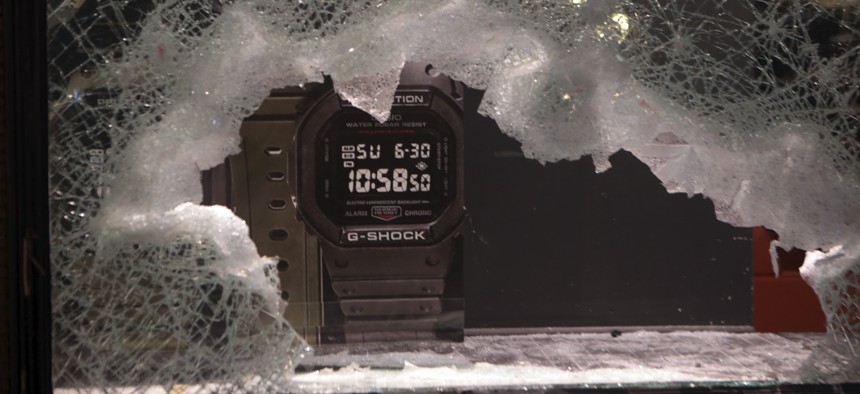The actions of police and protesters tend to mirror one another. When police use rubber bullets, flash bombs, and pepper spray on peaceful protesters, protesters are then also spurred to aggression—including, in some cases, inciting protesters to looting.
Boyd says police can try to reduce looting by taking a more “community policing”–style approach to daytime protests, which tend to be peaceful. Instead of intimidating nonviolent protesters, police could try being friendly. “To have a very large police presence with riot gear during the day is antithetical to what you want,” Boyd said. “That’s when you want the police on bicycles and on foot with the protesters.” At night, when vandalism and looting is more likely, police can take a tougher “enforcement” approach, he said.
One way to practice “enforcement” is by cracking down on looters, but not protesters. But while New York police drove their SUVs into protesters over the weekend, they seemed to take a hands-off approach to looters. In Manhattan, police “sat in their cars as looters, often in full view of police, brazenly walked in and out of stores,” The New York Times reported.
Journalists can also sometimes feed into looting by covering it excessively, or by interviewing looters instead of peaceful protesters. In response to this pattern, some protesters will throw something or break a window just to get attention from the media, Ray said.
The style and organization of a protest can also encourage—or discourage—vandalism. Fisher and Ray have found that protests that are preplanned and have coherent leadership tend to result in less vandalism than spontaneous protests that lack a central message. Without a formal structure or norms for behavior, protests can spin out, especially after dark. In fact, one way to prevent looting during a protest is just to call it a “vigil,” a word that connotes quiet and calm. Take the 2017 Women’s March in Washington, D.C., as an example: The demonstration had a set agenda, speakers, and protest path, and was unusually peaceful. Today’s protests are more spontaneous, and the people involved have varying goals. “Some people want the three officers who haven’t been charged to be charged,” Ray said. “Some people want policing to just completely end, on the other end of the spectrum.”
Most of the experts I spoke with agreed that looting is a side effect of protests, which are a side effect of the conditions causing the protests. In this case, the root cause is yet another killing of a black man by a white police officer. To fully eliminate looting, you’d have to eliminate the conditions that make people upset enough to protest.
As Christian Davenport, a political-science professor at the University of Michigan, put it to me, “the best way to prevent looting is to provide individuals with a living wage, provide for their basic needs, treat them with human dignity, and facilitate a life that is about thriving.”






